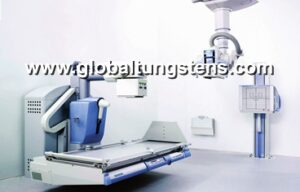The tungsten element is more effective in shielding and is well processed, so it is widely used in medicine as a collimator. Compared to lead, tungsten is much more environmentally friendly and has a higher density, which means smaller parts for the same weight. In neutron, x-ray and gamma rays In ray optics, a collimator is a device that filters the flow of rays so that only those traveling parallel to a specific direction are allowed through. Due to the use of lenses, it is not yet possible to focus radiation of such short wavelengths into an image as is common for electromagnetic radiation at optical or near-optical wavelengths, however a tungsten collimator can be used in neutron, x-ray and gamma rays
Radioactive source containers
Multi-leaf collimators
radiation surgery
Gamma probe
Medical transport and containment of isotopes
Radiotherapy machines
Computer tomographs
Single photon emission tomography
Positron emission tomography
Computerized tomography and x-ray security machines
Cancer treatment systems
Oncology instruments
Radioactive protection of the syringe
Tungsten Alloy Mobile Shielding
High density up to 18.8 g/cm3
excellent stretch and ease of processing
Better X-ray and gamma ray shielding
Protection Environmental protection and no pollution
ASTM-B-777
Tungsten parts are made from powder using powder metallurgy. This allows each piece of tungsten to return to its original powder form. The cost of recycling is relatively low and the process is well known and available in every country. There is very little loss when processing tungsten.





